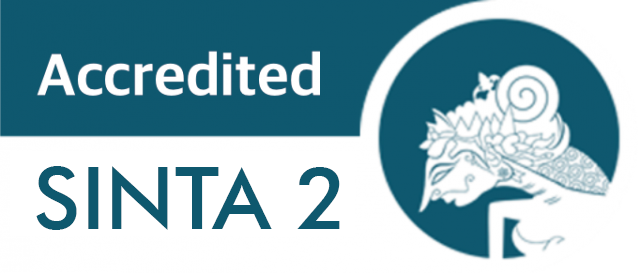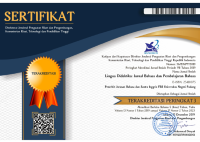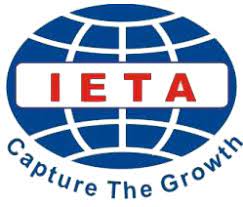THE POLITENESS OF ASSERTIVE SPEECH ACTS: SYNERGIZING THE LINGUISTIC POLITENESS DEVICES IN CONFLICT RESOLUTION COMMUNICATION
 ), Diah Kristina(2), Sumarlam Sumarlam(3),
), Diah Kristina(2), Sumarlam Sumarlam(3), (1) Universitas Sebelas Maret
(2) Pascasarjana Universitas Sebelas Maret
(3)
 Corresponding Author
Corresponding Author
Copyright (c) 2017 Lingua Didaktika: Jurnal Bahasa dan Pembelajaran Bahasa
DOI : https://doi.org/10.24036/ld.v11i1.7708
Full Text:
 Language : en
Language : en
Abstract
Keywords: politeness markers; assertive speech act; politeness maxims; dialogue
KESANTUNAN TINDAK TUTUR ASERTIF: MENSINERGIKAN PENANDA-PENANDA SANTUN LINGUISTIK DALAM KOMUNIKASI KONFLIK RESOLUSI
Abstrak
Artikel ini mengkaji realisasi kesantunan tindak tutur asertif pada dialog lintas agama dan cendikiawan Religious Freedom Project (RFP) di Universitas Georgetown, Amerika Serikat (A.S).Sumber data utama dalam penelitian ini berbentuk data tertulis (dokumen), yaitu teks transkripsi dari video percakapan dan sumber data pendukung yaitu yang berbentuk video rekaman tuturan dialog lintas agama, Religious Freedom Project (RFP) diakses melalui situs portal YouTube. Kesantunan pragmatic dalam kajian ini merangkum pembahasan tentang penerapan maksim/bildal-bidal kesantunan Leech (1983) sebagai konsekuensi penggunaan tindak tutur (TT) asertif beserta indikator perangkat-perangkat santunnya (House & Kasper, 1981). Dalam dialog RFP ditemukan penggunaan enam jenis-jenis TT asertif dominan yang merefleksikan PS-Leech, yakni TT sub-mengakui, menginformasikan, meyakinkan, mengargumentasikan, mengafirmasi, danmelaporkan. Berdasarkan temuan data dapat disimpulkan bahwa dalam dialog RFP perangkat-perangkat santun diklasifikasi menjadi delapan jenis (mengacu taksonomi House & Kasper, 1981), yaitu perangkat berpagar (hedging), pengecil (understaters), penurun (downtowner), perujukdiri (committers, peningkat dan penurun komitmen diri), penghindaran (agent-avoiders), penguat tingkat rasa (intensifiers), dan pengujaran berlebihan (overstaters), perangkat santun (politeness markers). Perangkat santun sebagai elemen linguistic berpengaruh besar terhadap daya tutur dalam komunikasi dialog RFP, kesemuanya secara dominan diarahkan pada tuturan-tuturan mengkritisi.
Kata Kunci/frase: Penanda-penanda kesantunan; tindak tutur asertif; maksim kesantunan; dialog
Keywords
References
Annual Report. (2012-2013). Berkley Center for Religious, Peace & World Affairs, Georgetown University.
Cap, P. (2005). Language and legitimization: Developments on the proximization model of political discourse analysis. Lodz Papers in Pragmatics I: 7-36.
Eelen, G. (2001). A critique of politeness theories. Manchester: St Jerome Publishing.
Fraser, B. (1990). Perspectives on politeness. North-Holland: Journal of Pragmatics 14 (1990) 219-236
Geertz, C. (1960). Linguistic etiquette in selected reading sociolinguistics.1986. Ed: Pride, J.B, dan Janet Holmes. Middlesex: Penguin Books.
Juita, N. (2016). Tindak tutur tokoh dalam kaba: pencerminan kearifan dan kesantunan berbahasa etnis minangkabau. Humanus: Jurnal Ilmiah Ilmu-ilmu Humaniora, Vol 15, No 1 (2016), retrieved from: http://ejournal.unp.ac.id/ index.php/humanus/article/view/6416.
Kecskes, I (2007). Dueling contexts: A dynamic model of meaning. Journal of Pragmatics-Elsevier’. 40 (2008): 385-406, (www.sciencedirect.com)
Lakoff, R.T., 1973. The logic of politeness, or minding your’s chic. Linguist. Soc. 9, 292-305
Leech, G. (2014). The pragmatics of politeness. Oxford: Oxford University Press
Leech, G.. (2011). Prinsip-prinsip pragmatik. Trans.(Principles of Pragmatics). Jakarta: UI-Press.
Leech, G. (2005). Politeness: is there an east-west devide?.Journal of Foreign Languages, No.6, November, General Serial No. 160.1004-5139 (2005) 06-0024-08, H043 – A.
Leech, Geoffrey. (1983). Principles of pragmatics. London and New York: Longman.
Locher, M.A. (2015). Interpersonal pragmatics and its link to (im)politeness research’. Journal of Pragmatics, 86 (2015): 5-10
Locher, M. A. (2004). Power and politeness in action: Disagrements in oral communication. Berlin, New York: M. de Gruyter.
Nurjamily, W. O. (2015). Kesantunan berbahasa indonesia dalam lingkungan keluarga (kajian sosiopragmatik). Jurnal Humanika, No. 15, Vol. 3, Desember 2015 / ISSN 1979-8296
Ting-Toomey, S. (1994). The challenge of facework: Cross-cultural and interpersonal issues. Albany: State University of New York Press.
Watts, R, J., et.al (1992). Politeness in language. Berlin, New York: Mouton de Gruyter.
Watts, R, J. (2003). Politeness. Cambridge: Cambridge University Press.
Wierzbicka, Anna. (2006). English meaning and culture. Oxford: Oxford University.
Zeinkowski. J, Ola Ostman. J, Verschueren, J. (2011). Discursive pragmatics. Amsterdam and Philadelphi: John Benjamins Publishing Company.
 Article Metrics
Article Metrics
 Abstract Views : 1631 times
Abstract Views : 1631 times
 PDF Downloaded : 562 times
PDF Downloaded : 562 times
Refbacks
- There are currently no refbacks.
Copyright (c) 2017 Lingua Didaktika: Jurnal Bahasa dan Pembelajaran Bahasa

This work is licensed under a Creative Commons Attribution-NonCommercial 4.0 International License.









